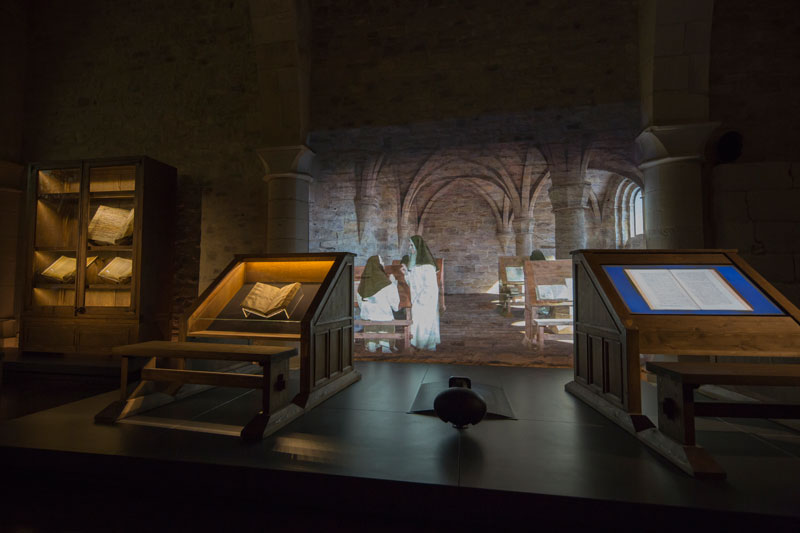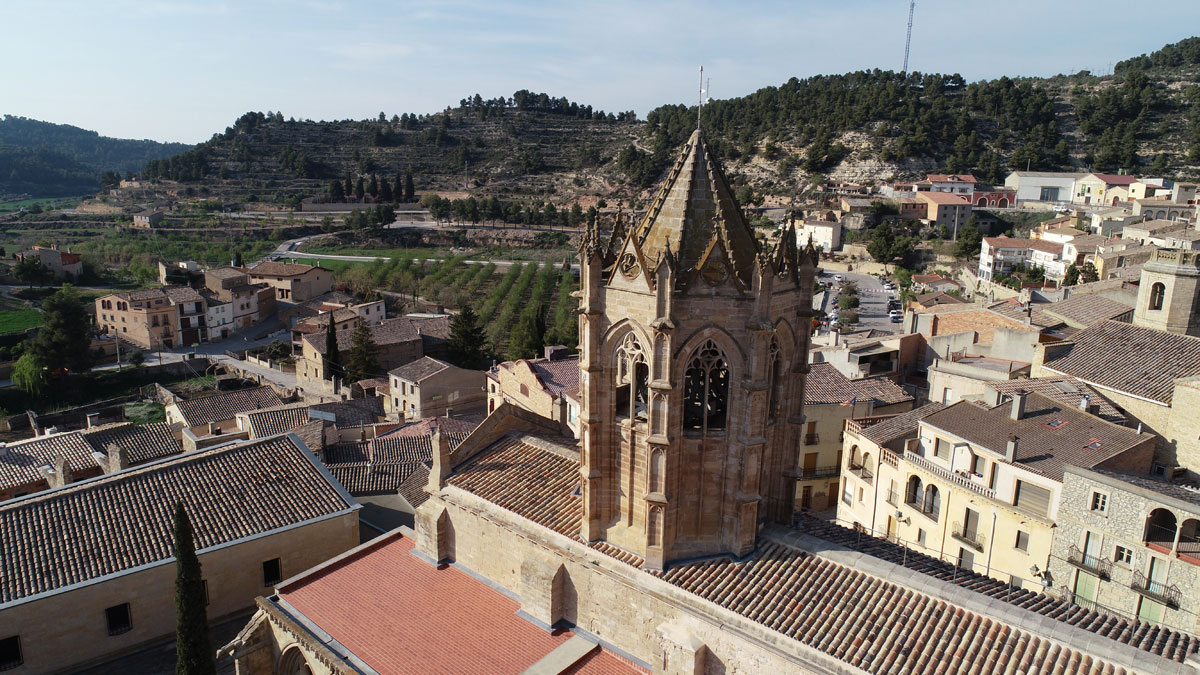
History of the monastery
Santa Maria de Vallbona is the most important female cistercian monastery in Catalonia. It began with several groups of hermits that later became nuns and monks, a sort of double community that lived under the crozier of their founder, Ramon de Vallbona, and lived according to the Benedictine rule. The first information we have dates from the year 1153.
In 1175 the men moved to Montsant, and the community, that was then all women, joined the Cistercian Order under the tutelage of the abbess Òria Ramírez, who had come from the monastery of Tulebras in Navarra.
For several weeks, and in order to support the new foundation, Alfons 1st the Chaste and Queen Sança established an itinerant court at Vallbona. King Jaume the Conqueror and Alfonso the Wise, along with their wives and courts, often stayed at Vallbona, and were recorded by the troubadours of the time.
The Monastery soon radiated vitality in the form of the foundation of other monasteries such as Sant Hilari in Lleida, Bonrepós in La Morera del Montsant, el Pedregal near Talladell, la Bovera in Guimerà, la Saidia in Valencia, and Valldonzella in Barcelona.
All this flowering is living proof of the expansive force of the nuns’ spirituality. We cannot forget that Vallbona is , and always has been, a center of contemplative life and culture, of work and prayer, all aimed at divine service. For this reason, in order to understand the “Vallbona phenomenon”, it is necessary to participate in one or more of the liturgical acts of the community.

Beginning in the thirteenth century, Vallbona had a monastic school where the daughters of noble families recieved an education. At the scriptorium, a group of nuns copied and ornamented manuscripts and codexes. In the classrooms, grammar, liturgy, calligraphy, illumination, music, weaving, and embroidery were taught.
Vallbona is and has always been a home of contemplative life and a center of culture, work and prayer, directed everything to the divine service




